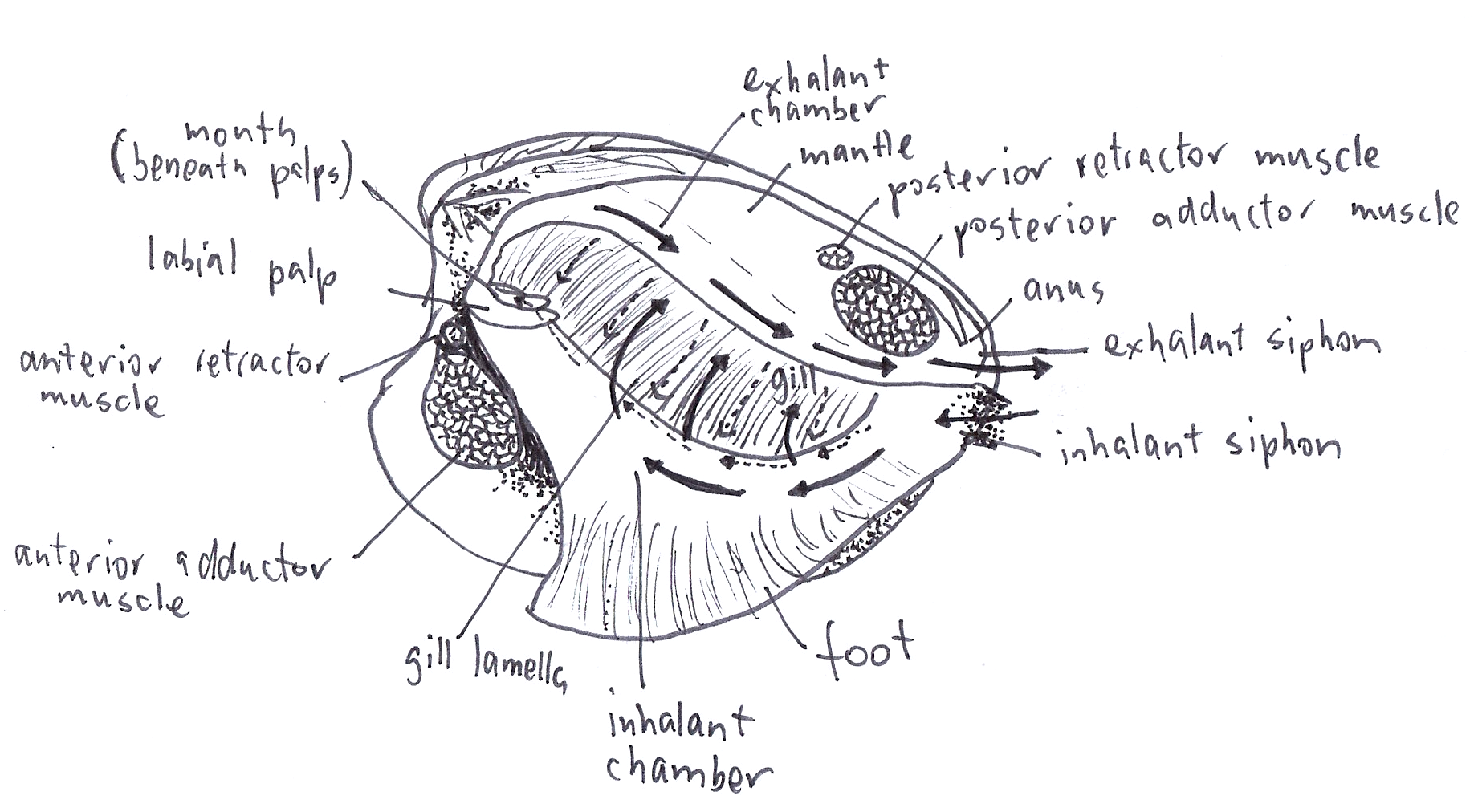FEEDING
M. Rufescens is a filter feeder. When they are fully burrowed, the two siphons remain just above the surface of the sediment. The inhalant siphon is responsible for sucking in water and associated food particles and the exhalant siphon is responsible for expelling the water that has had the food particles removed from it. The inhalant siphon has frills around the edges of it to avoid the inhalation of sand and other large particles.

Figure 1: A close-up of the siphons of M. rufescens. Note the frills around the exhalant siphon responsible for ensuring that sand and other particles do no enter.
Figure 2:Filter feeding mechanisms of
M. rufescens in action.
M. rufescens belongs to the a group of filter feeding bivalves known as Lamellibranchs. This group of bivalves has evolved specialised gills to allow for efficient filter feeding. Water is brought in through the inhalant siphon and passed over the gills. At this stage ciliated ‘sorting fields’ allow smaller particles to be sorted and discarded and send larger food particles to the mouth using the labial palps. The gills of Lamellibranchs have a greatly increased surface area compared to other ancestral bivalves to allow for more efficient sorting and feeding. The increase in surface area is achieved through greatly increased the number of gill filaments as well as an overall increase in the gill size.

Figure 3: The feeding anatomy of a bivalve with a body plan consistant with the Mactridae. The water and food particles enter through the inhalant siphon and and flows over the gill where the food particles are removed. This water then flows out of the exhalant siphon. (Adapted from Fox et al.) |